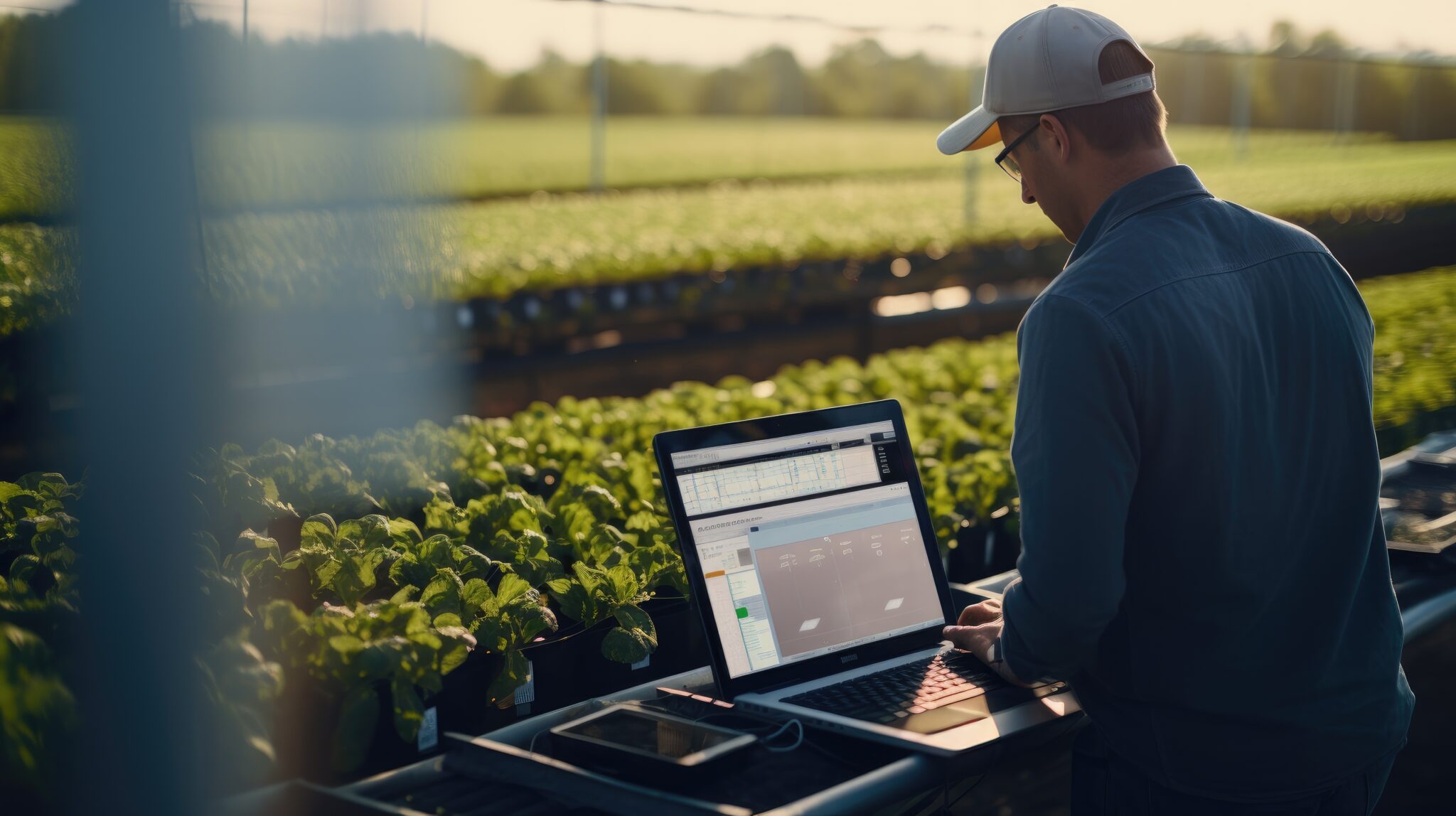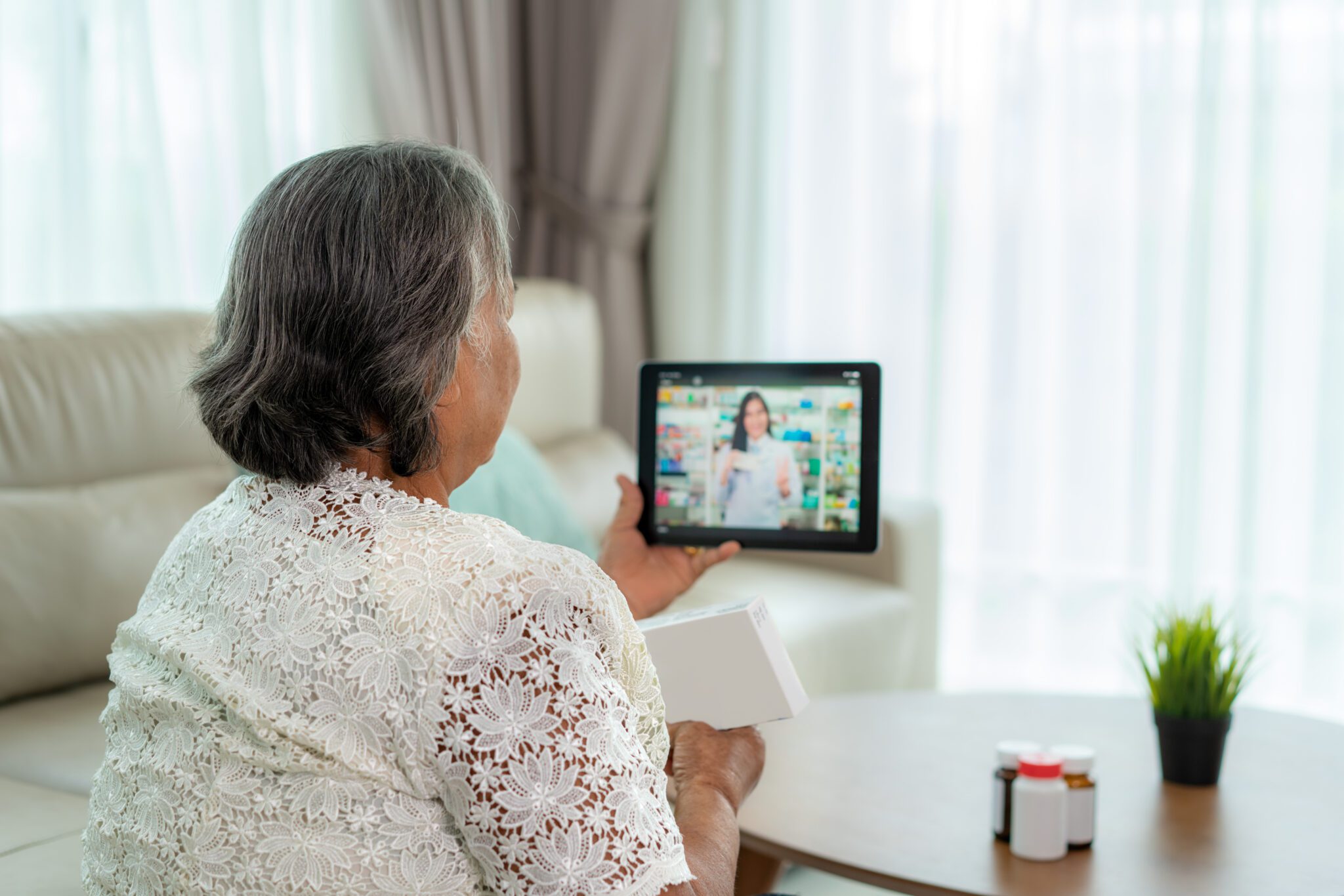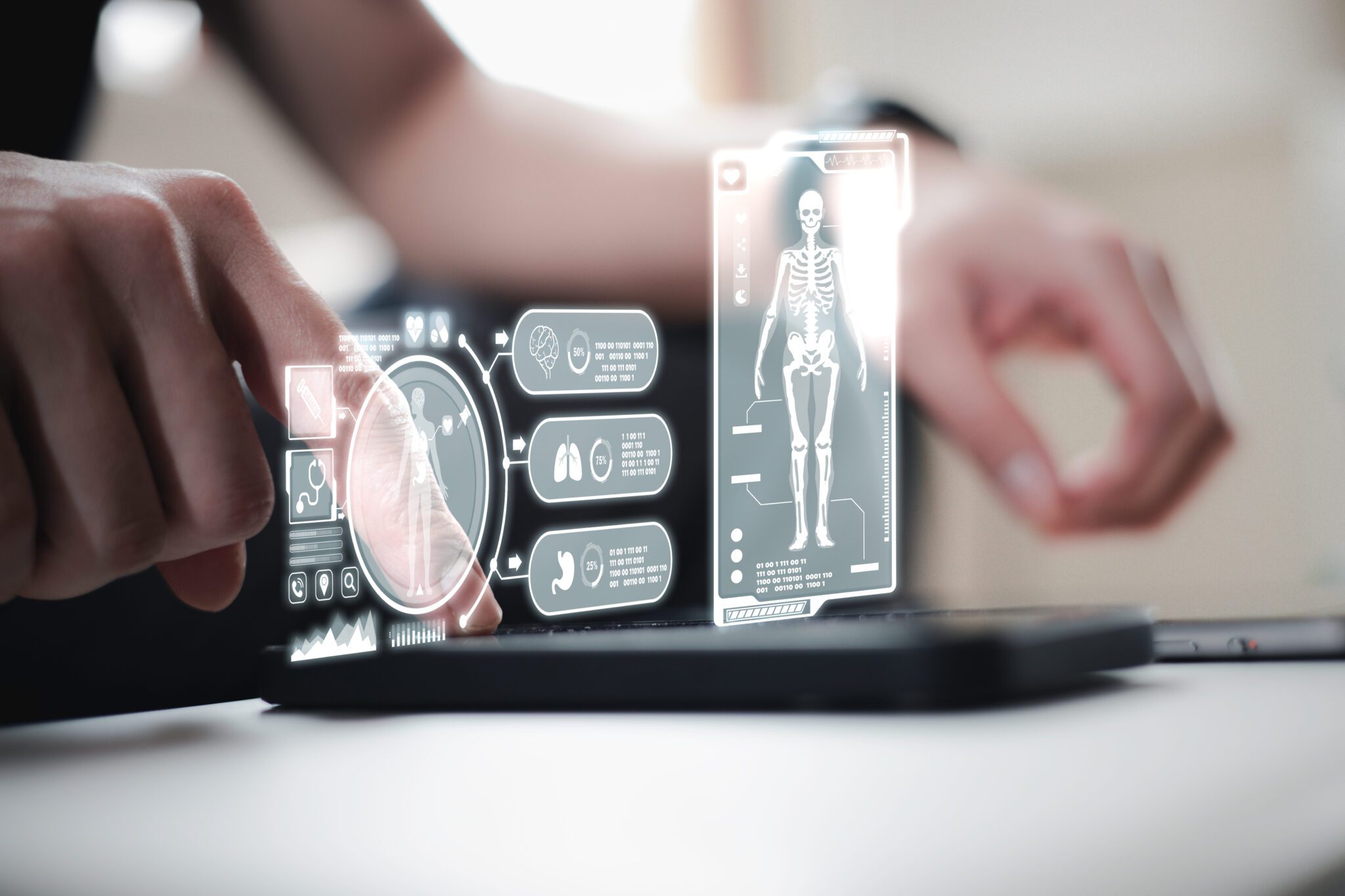From smart home devices to chatbots and language apps, AI has entered the mainstream. And whether you embrace AI, are sceptical of it, or, if you’re like my mum, argue with it (“Don’t patronise me, Monica”), there’s no denying that AI is changing our world.
Let’s look at how AI is transforming three big industries: agriculture, education and health, focusing on the important areas of climate forecasting, AI mentors and remote patient care respectively.
AI in agriculture: climate forecasting

If you’ve ever made an unsuccessful attempt to keep an indoor plant alive, spare a thought for the farmers who are responsible for growing the vast quantities of fruits, vegetables, grains and livestock that feed 26 million Australians and 50 million people overseas annually.
To achieve such remarkable outputs, farmers rely on tools like climate forecasting. By analysing past and present weather data, climate forecasting predicts future conditions, enabling farmers to make informed decisions about planting, harvesting, fertilising, irrigating and even selling stock.
The winds of change
Typically, climate forecasting uses a general circulation model – a mathematical description of Earth’s atmosphere, oceans, land and ice – and solves complicated equations to predict what will happen to climate systems hours, days and weeks in advance. These equations require a lot of computer power and are expensive to run.

When AI or machine learning is integrated into climate forecasting models, it identifies patterns in vast datasets, significantly enhancing the accuracy of predictions. It also achieves this more quickly and cost-effectively than traditional systems. A standout example is Google’s GenCast, which employs a probabilistic approach to deliver forecasts that – according to Google – surpass even the world’s leading numerical weather prediction system, developed by the European Centre for Medium-Range Weather Forecasts.
Deloitte’s 2023 Future of Sustainability report predicts that AI climate forecasting is set to become a powerful tool in the agricultural industry because it can optimise things like crop cultivation and monitoring, disease protection and precision farming.
As a basic example, say a farmer is considering when to sell her sheep. She may use climate forecasting software to determine how much rain is predicted to grow the pasture needed to feed the sheep. If drought is predicted, the farmer may decide to sell her sheep sooner – at a lower weight and rate – rather than incur the expense of supplementary feed.

Such decisions require farmers to have access to sophisticated climate forecasting technology and data, and they also need to be skilled in areas such as data interpretation, statistics, agronomy, risk management and strategic planning to ensure the technology is truly valuable.
Of course, AI climate forecasting can’t prevent weather events from happening, and the tech is not without expense or limitations, but it has the potential to help farmers better align farm decisions with upcoming climatic conditions. This means higher profits and minimised loss for farmers, and high quality and more affordable food for consumers.
Farming is already a risky venture, especially in an increasingly variable climate, but such next-gen tech can ultimately contribute to a more secure and sustainable food future.
Interested in studying agriculture at Curtin?
Bachelor of Science (Agricultural Science)
Master of Science (Agriculture and Food Security)
AI in education: AI mentors

Teachers are essential to nurturing and inspiring young minds. In the near future, they will continue be important role models for children, but will have AI in their toolkit to provide especially dynamic learning experiences.
Currently, AI mentors help some school children with assignments and learning acquisition through education apps and platforms. They are mostly constricted to text-based interactions, like a chatbot. But in an article by Forbes, it’s predicted that AI mentors will soon be able to speak to students and offer tailored emotional support, and even use biometric data to advise students on the best time to learn and ways to study.
AI mentors can also help teachers tailor curriculums to individual students.
For example, imagine a classroom where a virtual tutor is helping a child better understand algebra while the teacher assists a group of children on a history project.
Or a classroom where a virtual assistant can instantly adjust lessons according to a child’s strengths and weaknesses; giving them complex material for subjects they excel at and additional resources for subjects they find challenging.
Such curated learning has the potential to enhance a student’s confidence and greatly improve learning outcomes. But it’s not just students who can benefit from AI mentors. A 2024 online article from the Educator Australia illustrated how teachers, too, can use virtual assistants to enhance pedagogical strategies and generate learning activities more efficiently. This can lighten teachers’ administrative work loads, give them more time to dedicate to other tasks and help them manage their work-life balance.
Artificial intelligence in education can also make learning more accessible and inclusive. As long as there’s an internet connection, AI mentors can support students regardless of their location, economic situation or physical abilities.

Using AI safely in schools
Of course, children engaging with AI is considerably new territory. In 2023 the Federal Government released a national framework to help schools implement AI in a safe and ethical way. The framework was developed to help address concerns about the impact of AI on privacy and a child’s growth and experience. Not to mention the importance of human mentoring and relationships (I’m sure we can all remember at least one schoolteacher who seemed almost mystical in their wisdom and care).
Moreover, teachers need to be given the time and training to confidently use such technologies. But, if the education industry starts to integrate AI into classrooms now, it will be a strong position to ensure the invaluable work that teachers do, and the impact they have on young minds, is sustainable well into the future.
Interested in studying education at Curtin?
Explore our teaching and education courses
AI in healthcare: remote patient care

The global pandemic (remember that?) accelerated the adoption of remote patient care (RPC) in Australia. Essentially, RPC is when doctors, nurses and other healthcare professionals use communication technologies to diagnose and treat patients who are not in the same physical space.
Multiple technologies are usually used in RPC, including video conferences, electronic medical records, remote sensors like wearables and ingestible sensors, robotics for pharmaceutical deliveries, cloud computing and, of course, AI.
Machine learning at the heart of healthcare
AI is already playing an essential role in remote patient monitoring and ensuring continuity of care. For example, the Australian-developed AI tool, the Ainsoff Deterioration Index, is assisting patients with chronic conditions such as type 2 diabetes and heart failure.
The tool uses machine learning to dynamically track a patient’s vital signs, including blood pressure, heart rate, respiratory rate and temperature, to generate real-time data and alert clinicians if a patient is at risk of deterioration.

A paper published in the international medical journal Resuscitation reported that the technology reduced adverse events by 16.7% (including death and emergency response) and reduced unplanned hospital admissions by more than 20% in a 10-month trial at the Sydney Adventist Hospital.
A 2025 RMIT report highlights that RPC is not a new form of health treatment. In fact, prior to the 1950s and the establishment of hospitals as hubs of healthcare, it was common for people to be treated in their homes. However, with technological innovations like AI, RPC is becoming more widely available and complementary to face-to-face health care.
The RMIT report surmises that this hybrid approach to patient care can create “a seamless and more efficient healthcare experience,” one that is capable of “continuous monitoring and support, improved patient outcomes, increased access to healthcare services, especially for those in remote and underserviced areas.”
Going forward, a key consideration of integrating AI with RPC in Australia is equity; ensuring that communities outside of metropolitan areas have the resources and infrastructure to access and use such technology and treatment.
Other considerations for the future of healthcare include AI bias, data and privacy protection, consent and, like AI in education, the vital importance of human relationships. The RMIT report concludes with a note of caution, advising that RPC needs to “prioritise a patient’s needs over technology” and that any technology should “…enhance, rather than replace, the essential human elements of care.”
Interested in combining health and AI at Curtin?
Specialise in Health Data in our Bachelor of Health Sciences.
Where to from here?
AI innovations may sound like the stuff of the future, but their true power lies in responding to today’s challenges. From improving healthcare to transforming education and reshaping how we work and contribute to society, this article has explored just a small cross-section of what’s possible already through the synthesis of current knowledge and technological innovation.
As with any leap forward, it will only be by keeping humanity at the core of our efforts that we’ll ensure that AI enhances our lives and helps pave the way for a brighter, more sustainable future.



